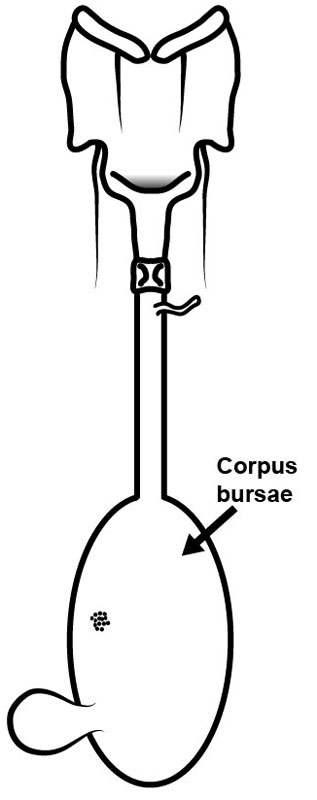Leucinodes group
Name
Leucinodes group
Overview
The Leucinodes group as here defined includes eight genera with at least 74 species in the Crambidae: Spilomelinae. Except Sceliodes and Leucinodes itself, all are Neotropical to temperate Nearctic. The Neotropical members correspond to the Udea group of Munroe (1995)Munroe (1995):
Munroe EG. 1995. Crambidae. Pp. 34–79. in: Heppner, J. B., Atlas of Neotropical Lepidoptera. Checklist: Part 2. Hyblaeoidea - Pyraloidea - Tortricoidea 3. Association for Tropical Lepidoptera & Scientific Publishers, Gainesville. minus Udea Guenée and Lamprosema Hübner (as the latter two feed on different host plants, and molecular evidence indicates that their relationship is not close or, at best, based on symplesiomorphies). The host plants of the group, as far as known, are Solanaceae. The larvae tie leaves or bore internally, usually in fruits.
Perhaps the most convincing synapomorphy of the Leucinodes group is the possession of only one frenular bristle on the female hind wing (except Rhectosemia Lederer, where there are two). Other diagnostic characters include: narrowly triangular valvae (or spoon-shaped in Atomopteryx and Lineodes), a corpus bursaeCorpus bursae:
The enlarged, bulbous anterior end of the female genitalia.
 without a signumSignum:
without a signumSignum:
Any sclerite, sclerotized area, or discrete granular area on the wall of the corpus bursae (pl. signa).
 , and ventrally open sacci tympani. The labial palpi are porrect, and some of the pestiferous internal feeders have an elongate apical segment, probably a sensory adaptation. Furthermore, the fruit-boring genera whose immature stages are known (Leucinodes, Neoleucinodes, and Sceliodes) share two unusual characters: the subventral group of the first abdominal segment has only one setaSeta:
, and ventrally open sacci tympani. The labial palpi are porrect, and some of the pestiferous internal feeders have an elongate apical segment, probably a sensory adaptation. Furthermore, the fruit-boring genera whose immature stages are known (Leucinodes, Neoleucinodes, and Sceliodes) share two unusual characters: the subventral group of the first abdominal segment has only one setaSeta:
A larval hair (pl. setae).
 , and the second and third abdominal segments of the pupa have rounded humps dorsal of the spiracles. These characters are exceptional if not unique among Spilomelinae.
, and the second and third abdominal segments of the pupa have rounded humps dorsal of the spiracles. These characters are exceptional if not unique among Spilomelinae.
References
Munroe 1995Munroe 1995:
Munroe EG. 1995. Crambidae. Pp. 34–79. in: Heppner, J. B., Atlas of Neotropical Lepidoptera. Checklist: Part 2. Hyblaeoidea - Pyraloidea - Tortricoidea 3. Association for Tropical Lepidoptera & Scientific Publishers, Gainesville.

